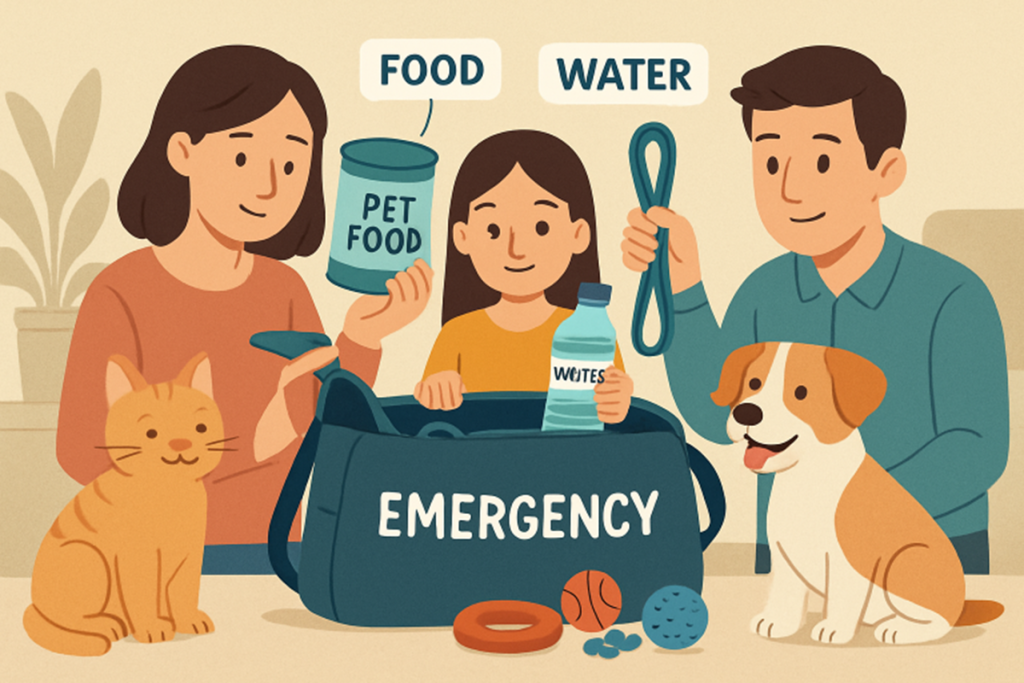Keeping Your Pets Happy and Safe During Emergencies

Key Takeaways
- Develop a comprehensive emergency plan that includes your pets.
- Assemble a pet emergency kit with essential supplies.
- Ensure your pets have proper identification and microchips.
- Stay informed about pet-friendly shelters and evacuation routes.
- Keep your pets calm and secure during emergencies.
Table of Contents
- Introduction
- Developing an Emergency Plan
- Assembling a Pet Emergency Kit
- Ensuring Proper Identification
- Knowing Pet-Friendly Shelters
- Keeping Pets Calm During Emergencies
- Post-Emergency Care
- Final Thoughts
Emergencies such as natural disasters, home fires, or sudden evacuations can be stressful for everyone in your household—especially your pets. As cherished family members, pets depend on you to be prepared before trouble strikes. Ensuring their security during unforeseen events can protect their health and emotional well-being. By planning ahead, including pets in your preparations, and knowing when to contact an animal medical center, you can keep your beloved companions as safe and happy as possible in challenging times.
Developing an Emergency Plan
Start by researching the types of emergencies most likely in your region, such as hurricanes, earthquakes, wildfires, or floods. Clarify who will be responsible for gathering pets, their emergency kit, and any necessary documents. Assign backup roles in case a primary caregiver isn’t home. Practice your evacuation route together with your pets, ensuring that even anxious animals are comfortable with carriers, leashes, and the car. Test contacting your local animal control agency or veterinary office ahead of time to clarify protocols during emergencies.
Assembling a Pet Emergency Kit
Build a transportable emergency kit for each of your pets, keeping it in an easy-to-grab location. Essentials include:
- At least seven days’ supply of food and water for each pet. Consider collapsible bowls for portability.
- Prescription medications, medical records, and vaccination certificates in a waterproof bag. This will streamline access to boarding facilities or shelters, which often require proof of immunization.
- Leashes, harnesses, sturdy carriers, and a muzzle if your pet is nervous around strangers.
- A current photo of your pet and a recent family photo for identification and proof of ownership.
- Favorite comfort items, such as toys, bedding, or chews, to help alleviate anxiety in new environments.
Regularly review and update your kit to ensure food, water, and medications aren’t expired.
Ensuring Proper Identification
Updated identification is your pet’s best chance of being returned if separated during an emergency. Ensure all pets wear fitted collars with clearly printed ID tags, including your phone number and address. Microchipping adds an extra layer of security—register the chip with your contact details and update them if you move or change numbers. Many lost pets are never returned because of incomplete or outdated microchip information. Learn more about microchipping safety from the Keep vet office and microchip registry numbers in your emergency kit.
Knowing Pet-Friendly Shelters
Most disaster shelters do not accept pets unless they are service animals. Research which locations along your evacuation route are pet-friendly, such as designated community shelters, hotels, motels, or boarding facilities. Call ahead and ask about specific requirements, such as vaccination records or crate sizes. Apps and websites can help locate nearby pet-friendly shelters during evacuations. Additionally, contact local animal hospitals or humane societies for a list of emergency accommodations.
Keeping Pets Calm During Emergencies
Stress and anxiety can escalate when routines are disrupted. Maintain a quiet, secure environment by keeping pets in familiar carriers or rooms. Familiar bedding, favorite toys, or pheromone sprays can help soothe nerves. Some pets may benefit from anxiety wraps or calming supplements—consult your veterinarian for recommendations tailored to your pet’s needs. Always keep pets leashed or contained during and after an emergency, as even well-behaved animals may panic and escape amid chaos.
Post-Emergency Care
Once the immediate threat has passed, carefully inspect your home and outdoor areas for new hazards, including debris, sharp objects, chemicals, or damaged fencing. Return pets to their routines gradually, monitor them for signs of physical or emotional stress, and seek veterinary care if your pet appears injured or ill. Patience and attention are crucial during recovery, as pets may exhibit unusual behaviors or appetite changes in response to trauma. For more advice about post-emergency adjustment, review the
Final Thoughts
By acting now, you can dramatically improve your pet’s safety during emergencies and their recovery afterward. Preparation, communication, and compassion will help keep your pets happy, secure, and part of your family—no matter what challenges arise. Take the time today to review your emergency plan, update your pet’s records, and assemble a complete kit. A few thoughtful steps now can make all the difference when every second counts.



